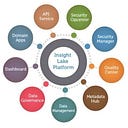Visual Understanding and Reasoning Examples: Categories and Analytical Insights
In an increasingly visual world, AI-powered visual understanding and reasoning (VUR) models have become vital across industries such as retail, healthcare, insurance, and autonomous vehicles. These models extract context, infer reasoning, and generate insights from visual data. In this blog, we’ll explore different categories of visual understanding tasks, showcase examples in each category, and explain what insights can be derived from these models.
1. Object Detection and Classification
Description: Identifies and classifies objects within an image.
Example:
An AI model processes an image of a kitchen and classifies objects such as “microwave,” “knife,” and “fridge.”
Image: A family preparing food in a modern kitchen.
Applications:
- Retail: Product recognition for checkout-free stores.
- Autonomous Vehicles: Detecting pedestrians, traffic signs, and vehicles.
Insights Extracted:
- Count of objects (e.g., “4 apples” or “3 cartons of milk”).
- Object types and spatial relationships (e.g., “the apple is on the plate”).
2. Scene Recognition and Contextual Analysis
Description: Analyzes the overall scene to determine the context.
Example:
A model analyzes a beach image and identifies it as “outdoor, beach” with elements such as “sand,” “water,” “umbrella.”
Applications:
- Travel Recommendations: Automatically categorizing user photos.
- Smart Home Devices: Adjusting settings based on detected scenes.
Insights Extracted:
- Scene types: Indoor vs. outdoor.
- Time of day (e.g., “sunset” vs. “daytime”).
- Activity inference (e.g., “leisure” vs. “sports”).
3. Image Captioning
Description: Generates descriptive sentences based on the contents of an image.
Example:
An AI model processes an image of a child holding a balloon and generates the caption:
“A young boy wearing a red shirt holds a blue balloon in a park.”
Applications:
- Accessibility Tools: Helping visually impaired individuals understand images.
- Social Media: Automatically generating descriptive captions for photos.
Insights Extracted:
- Detailed descriptions of the environment.
- Sentiment conveyed (e.g., “joyful atmosphere”).
4. Visual Question Answering (VQA)
Description: Answers natural language questions based on image content.
Example:
Image: A soccer game in progress.
Question: “How many players are wearing red jerseys?”
Answer: “Six.”
Applications:
- Education: Assisting in interactive learning by analyzing textbook illustrations.
- Security: Answering surveillance-based questions.
Insights Extracted:
- Scene-specific numerical and relational data.
- Ability to reason over spatial arrangements (e.g., “who is closer to the ball?”).
5. Relationship and Affordance Detection
Description: Identifies relationships between objects in an image and predicts potential interactions.
Example:
Image: A person sitting at a dining table with a cup and spoon.
Model Output:
- Relationship: “The spoon is next to the cup.”
- Affordance: “The cup can be picked up.”
Applications:
- Robotics: Assisting robots in understanding object affordances for manipulation tasks.
- AR/VR: Enabling realistic virtual interactions.
Insights Extracted:
- Object relationships (e.g., “on,” “next to”).
- Predicted interactions (e.g., “the person may drink from the cup”).
6. Image-to-Text Inference (OCR and Beyond)
Description: Extracts and interprets text from images and infers meaning.
Example:
Image: A restaurant menu with multiple sections.
Output:
“Starters: Soup of the day $5.99.”
Applications:
- Document Processing: Extracting text from scanned documents.
- E-commerce: Reading product labels.
Insights Extracted:
- Textual data for downstream tasks (e.g., invoice digitization).
- Understanding structured vs. unstructured content in text-based images.
7. Facial Recognition and Emotion Detection
Description: Detects and recognizes faces while inferring emotions.
Example:
Image: A group of students posing for a photo.
Model Output:
- “Person A: Happy, smiling.”
- “Person B: Neutral expression.”
Applications:
- Security: Identifying individuals in security footage.
- Marketing: Analyzing customer reactions to products.
Insights Extracted:
- Emotion metrics (e.g., sentiment scores).
- Demographic analysis (age, gender predictions).
8. Visual Anomaly Detection
Description: Identifies outliers or anomalies in images.
Example:
Image: A factory conveyor belt with a defective product.
Model Output:
“Defective widget: missing screw.”
Applications:
- Manufacturing: Detecting defects in real time.
- Healthcare: Identifying abnormalities in medical scans.
Insights Extracted:
- Anomaly classification (e.g., “normal” vs. “defective”).
- Severity levels of detected anomalies.
9. Pose Estimation
Description: Detects the positions and orientations of human body parts.
Example:
Image: A yoga class.
Model Output:
- “Person 1: Tree pose with 80% accuracy.”
Applications:
- Fitness Apps: Providing pose correction for workouts.
- Sports Analytics: Tracking player movements.
Insights Extracted:
- Accuracy of body posture.
- Predictions of physical activity intensity.
10. Image Generation and Completion
Description: Fills in missing parts of an image or generates new images from prompts.
Example:
Image: A partially obscured photograph of a landscape.
Model Output:
“Generated the missing half of the mountain range.”
Applications:
- Creative Tools: Assisting artists with image completion.
- Restoration: Repairing damaged photos.
Insights Extracted:
- Predicted missing elements.
- Creative interpolations based on learned features.
Conclusion
Visual understanding and reasoning tasks enable AI to process, reason, and generate insights from images across various industries. From detecting objects and scenes to inferring relationships and emotions, the applications of VUR models are vast. By leveraging advanced AI tools, businesses can gain actionable insights to enhance decision-making, improve customer experiences, and automate processes. As VUR models continue to evolve, their ability to understand and reason with visual data will unlock new possibilities in domains like healthcare diagnostics, autonomous navigation, and personalized marketing.
